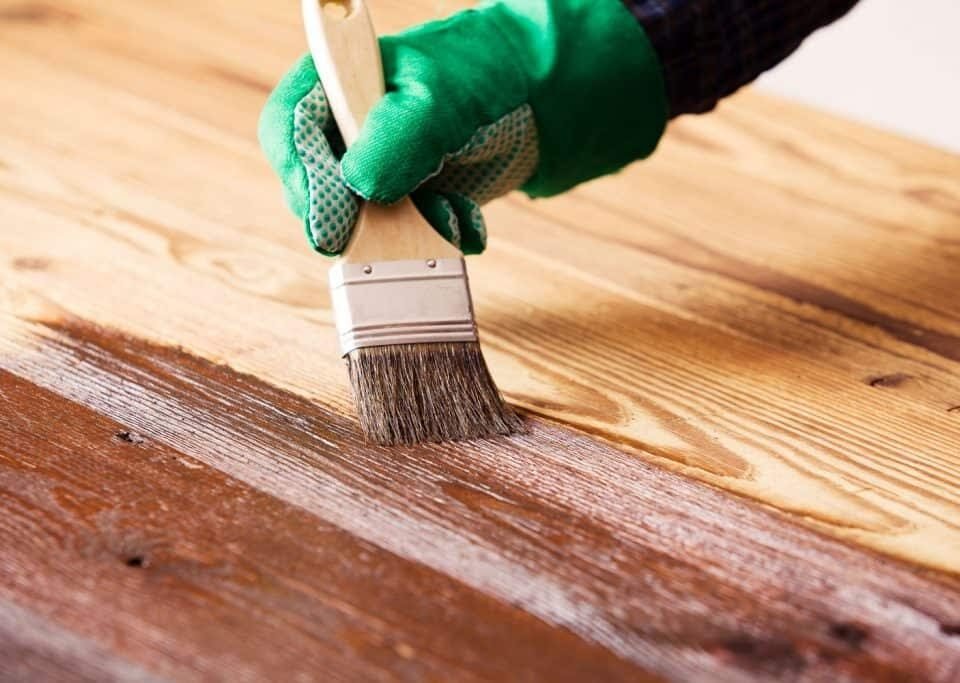Hardwood floors are a popular choice among homeowners for their timeless beauty and durability. Over time, however, even the most well-maintained hardwood floors can start to show signs of wear and tear. If your hardwood floors are looking dull or scratched, staining them can be a great way to breathe new life into your space. However, before diving into the staining process, there are several important factors to consider. In this article, we will explore what you need to think about before staining your hardwood floors.
Table of Contents
Understand the Staining Process
Staining hardwood floors is a multi-step process that requires careful preparation and attention to detail. It typically involves cleaning the floors thoroughly, sanding them to remove any existing finish or blemishes, applying the stain evenly, and sealing the stained surface with a protective topcoat. If you are not experienced in working with stains and finishes, it’s recommended to hire a professional flooring contractor who can ensure a high-quality and long-lasting result.
Consider the Type of Hardwood
Different types of hardwood have varying characteristics, including their ability to absorb stains. Some hardwood species, such as oak or maple, are known for their excellent staining capabilities, while others, like cherry or pine, may require additional steps to achieve a desired color. Research the specific type of hardwood you have and consult with professionals to determine the best staining techniques and products for your floors.
Take Into Account the Age of the Floors
The age of your hardwood floors can also influence the staining process. Newly installed floors may require additional time for acclimation and preparation before staining, as the wood needs to adjust to the humidity and temperature of the environment. Conversely, older floors may have accumulated dirt, grime, or wax buildup that needs to be removed before staining. Be sure to factor in these considerations to ensure optimal results.
Plan for Downtime
You should remember that staining hardwood floors is not a quick project that can be done in one day. Depending on the size of the area, the drying time of the stain, and the number of coats needed, the process can take several days or even longer. It’s essential to plan accordingly and make arrangements to temporarily relocate furniture, pets, and family members during the staining process. Additionally, keep in mind that you’ll need to avoid walking on the floors until they are fully cured to prevent damage to the stain or finish.
Maintenance and Longevity
Once your hardwood floors have been stained and sealed, it’s important to establish a regular maintenance routine to keep them looking their best. Avoid using harsh chemicals or abrasive cleaners that can strip away the finish or damage the stain. Instead, use a mild cleaner specifically designed for hardwood floors and follow the manufacturer’s guidelines. Additionally, consider placing rugs or mats in high traffic areas to protect the stained surface from excessive wear and tear.
Over time, even with proper maintenance, the stain on hardwood floors can fade or wear off. It’s essential to understand that staining is not a permanent solution and that you may need to periodically reapply the stain to maintain its appearance. The frequency of restaining will depend on factors such as foot traffic, sunlight exposure, and the quality of the initial staining job. It’s a good idea to consult with professionals or refer to manufacturer recommendations to determine the ideal timeframe for reapplying the stain.
Cost Considerations
Staining hardwood floors is an investment, and it’s important to consider the cost implications before proceeding. The cost will depend on various factors, including the size of the area, the type of hardwood, the complexity of the staining process, and whether you choose to hire professionals or do it yourself. Obtaining quotes from reputable flooring contractors will give you a better understanding of the overall expenses involved. Keep in mind that while professional services may incur higher costs, they often provide expertise, efficiency, and a high-quality finish.
Environmental Impact
When choosing stains and finishes for your hardwood floors, it’s worth considering the environmental impact of the products you use. Traditional oil-based stains and finishes may contain volatile organic compounds (VOCs) that can emit harmful gases into the air, contributing to indoor air pollution. Opting for water-based or low-VOC products can help minimize the environmental impact and create a healthier living environment. These products have fewer odors, dry faster, and are generally easier to clean up.
Alternative Options
If after careful consideration, staining your hardwood floors doesn’t seem like the best option for you, there are alternative solutions to rejuvenate their appearance. One alternative is refinishing, which involves sanding down the existing finish, repairing any imperfections, and applying a new finish. This process can restore the natural beauty of the wood without changing its color. Another option is using a floor polish or wax to add shine and protection to your floors. These alternatives may require less time and investment compared to staining, so it’s worth exploring them if staining doesn’t align with your goals or preferences.
Summary
Staining your hardwood floors can be an effective way to enhance the aesthetics of your space and give your floors a fresh, new look. However, it’s crucial to consider various factors before embarking on the staining process. Assess the condition of your floors, choose the right stain color, understand the staining process, and consider the type and age of the hardwood. Plan for downtime, establish a maintenance routine, and factor in the cost implications. Additionally, be mindful of the environmental impact of the products you use and explore alternative options if staining doesn’t meet your needs. By taking these considerations into account, you can make an informed decision and achieve beautiful, long-lasting results for your hardwood floors.










